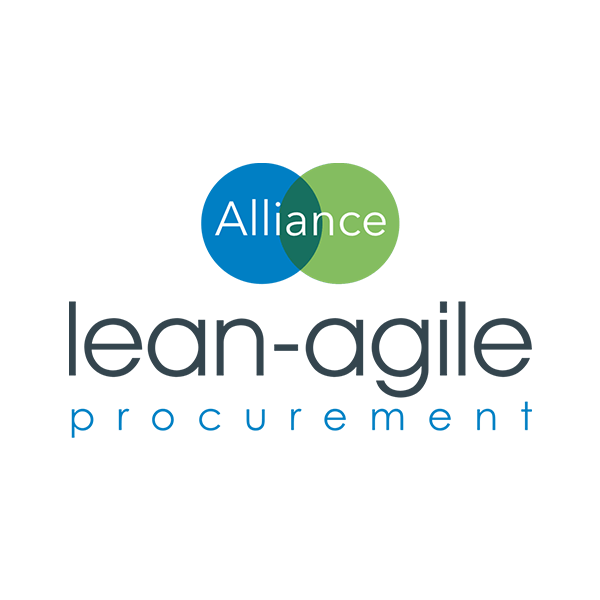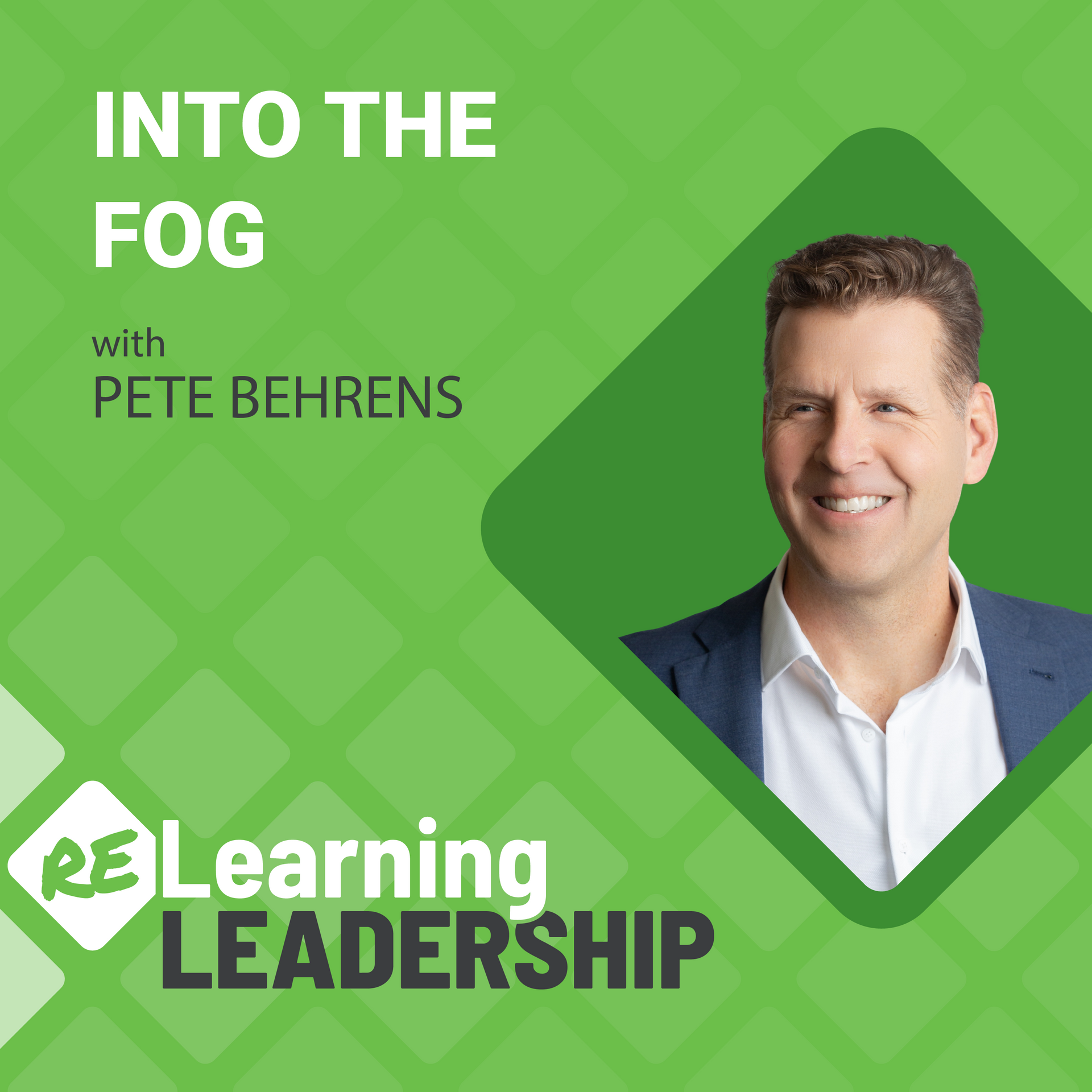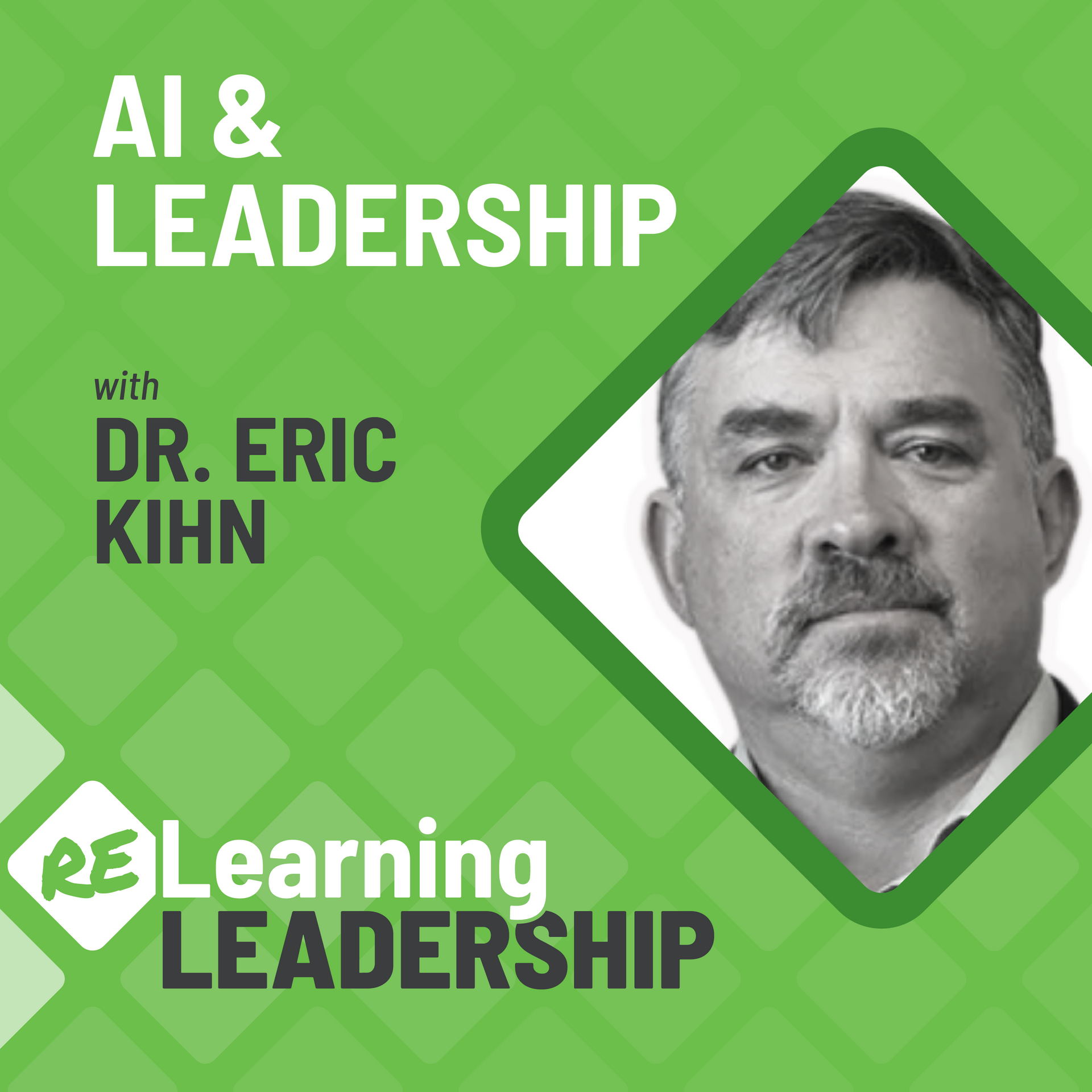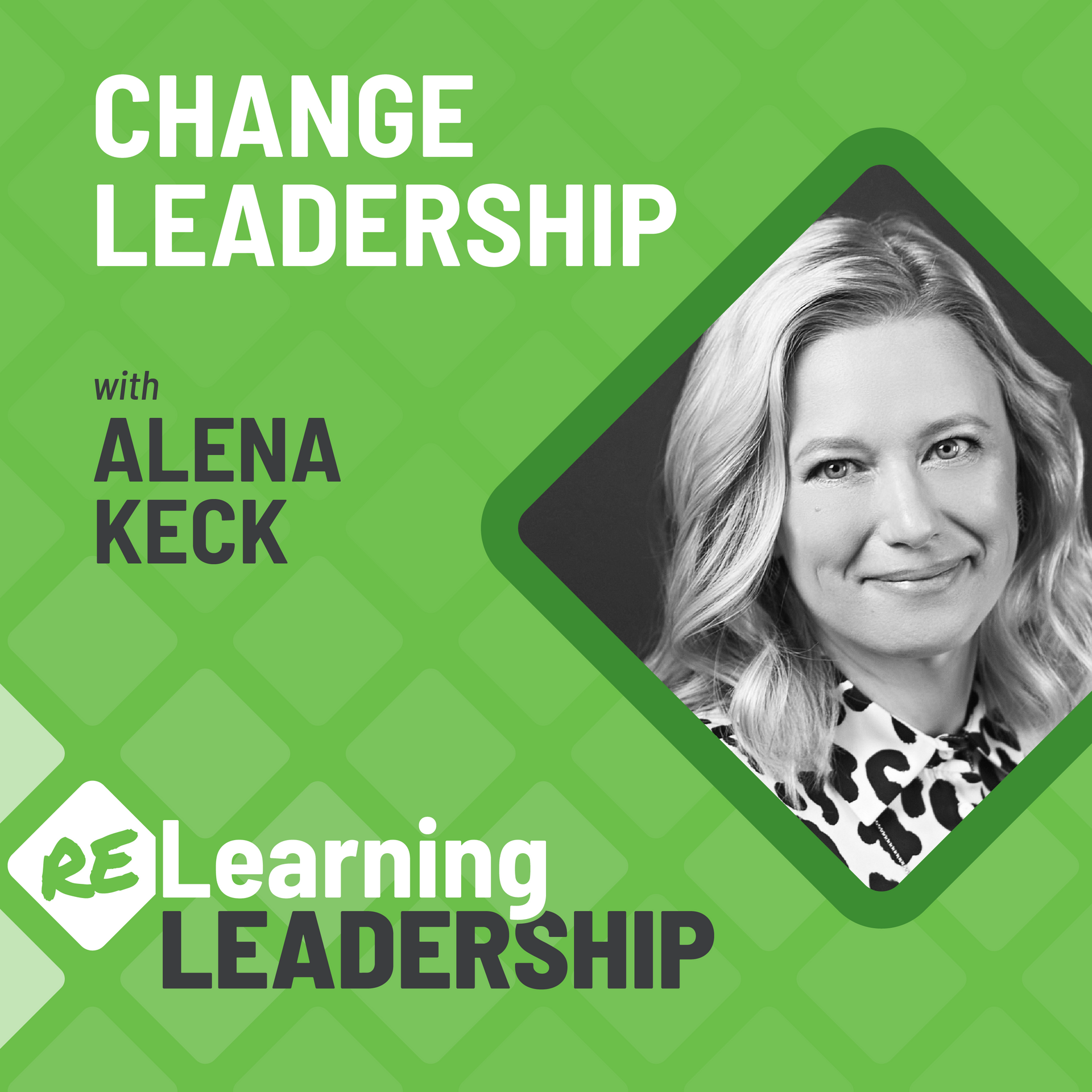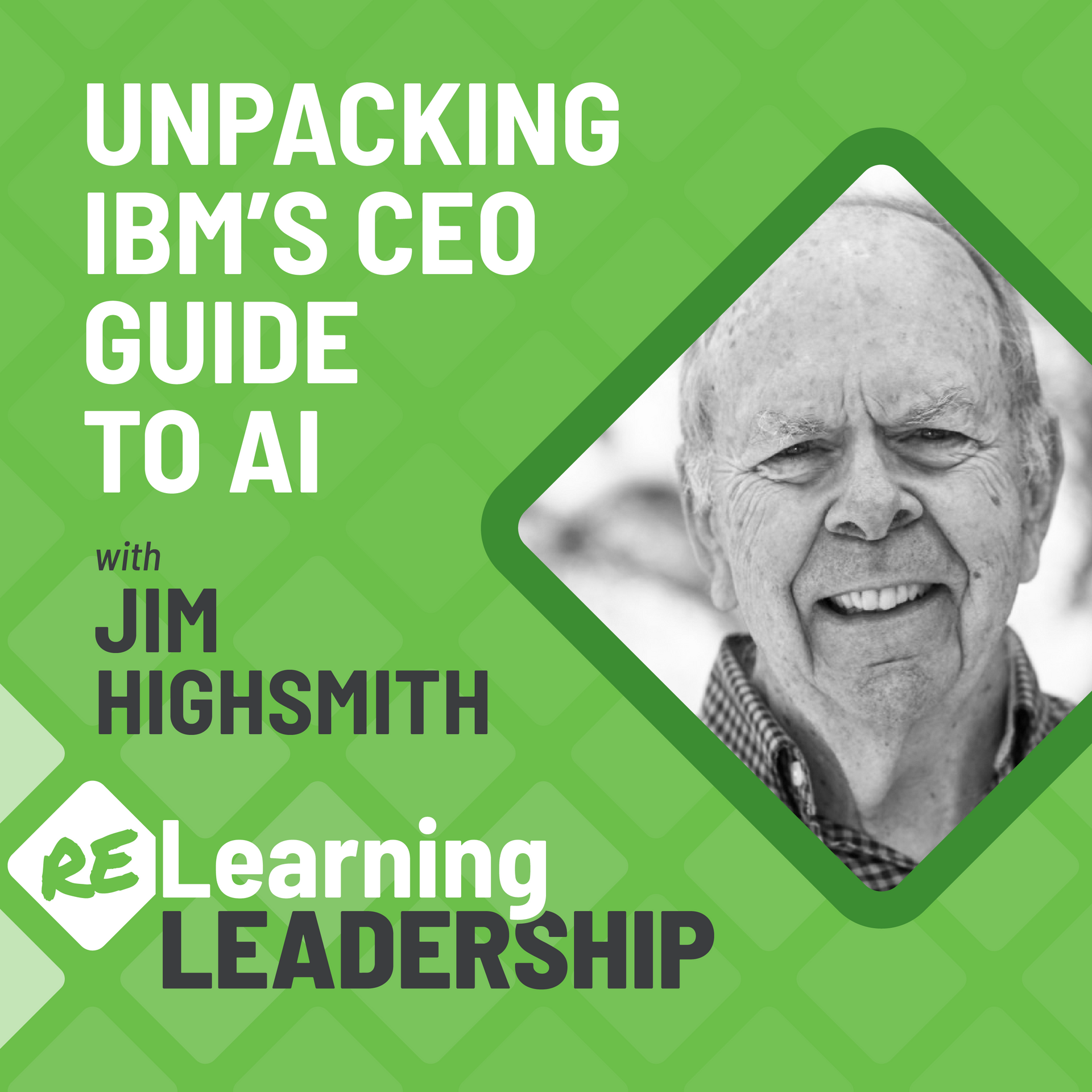8: Shattering Bottlenecks: An LAP Story
How do leadrer apply new thinking to stagnated practices?
Henriette Kamfer, a Procurement Specialist with one of Australia's largest natural gas infrastructure businesses, shares an inspiring story of revamping a large-scale sourcing project to better engage stakeholders AND improve their bottom line.
Mirko Kleiner, Founder of Lean Agile Procurement (LAP), joins the dialogue to share how a single premise of applying agile principles to standard business practices has unleashed a world-wide wave of disrupting "business as usual".
Henriette Kamfer, Procurement Specialist
Henriette Kamfer is a Procurement Specialist with APA Group in Australia.
I’m first and foremost wife to one husband and mother of two beautiful children. Daily I chose to clothe myself with compassion, kindness, humility, gentleness and patience. I enjoy nature and love to spend time kayaking, snorkeling and camping.
I’m also a passionate professional that strives to further the credibility and relevance of procurement through continuous learning and practicing procurement excellence in the organizations that I work for.
My first exposure to Lean Agile Procurement (LAP) was early 2020 whilst attending LAP training presented by Mirko Kleiner and a shift happened in my mindset. I realized that I could achieve the excellence that I continuously strive for in an agile manner whilst achieving far higher results than only practicing the traditional procurement approach that I’ve been so used to over the past 20+ years.
I’ve since then completed my first LAP project and have now become a LAP ambassador not only within my organization but also in Australia. My future goal is to expand my LAP experience with the aim to be recognized in the broader procurement community as a well-rounded (and well grounded!) procurement practitioner.
Connect with Henriette
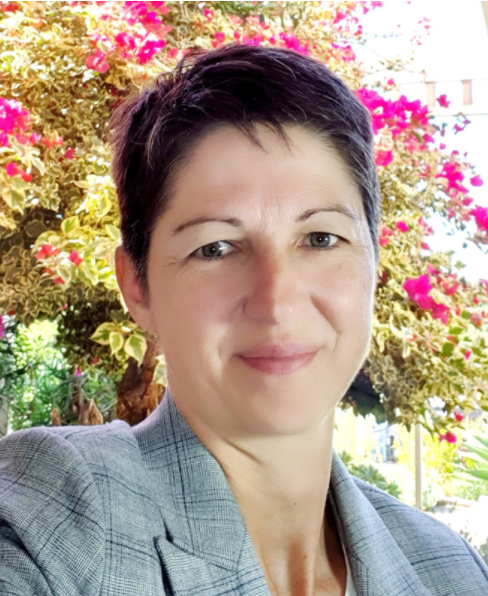
Mirko Kleiner, Agile Enterprise Coach
Mirko Kleiner is a Thought Leader and 2018 CIPS Award Winner in Lean-Agile Procurement, an International Speaker, Author, President of LAP Alliance, co-founder Flowdays, Agile Enterprise Coach, and Certified Scrum@Scale Trainer.
My little known fact is I'm a hobby barista. What's yours?
My guiding principles in life are "BE the change you WISH to see in the world" & "WHAT IF?". Early in my life, I came across with different cultures (India, Russia, etc.) which was the best thing that could have happened to me and made me a better person and entrepreneur.
Today in everything I do I'm looking for an integral, co-creative approach to increase business value significantly +100%. Allow me to question your STATUS QUO, or we‘ll BOTH be wasting our time!
I love to lecture at the EIPM, support the Business Agility Institute NY & advise the CIPS Switzerland Committee. I am currently working on topics like: De-Scaled Business Agility, Adaptive Partner Ecosystem & the question "What if we create our own money?"
Connect with Mirko
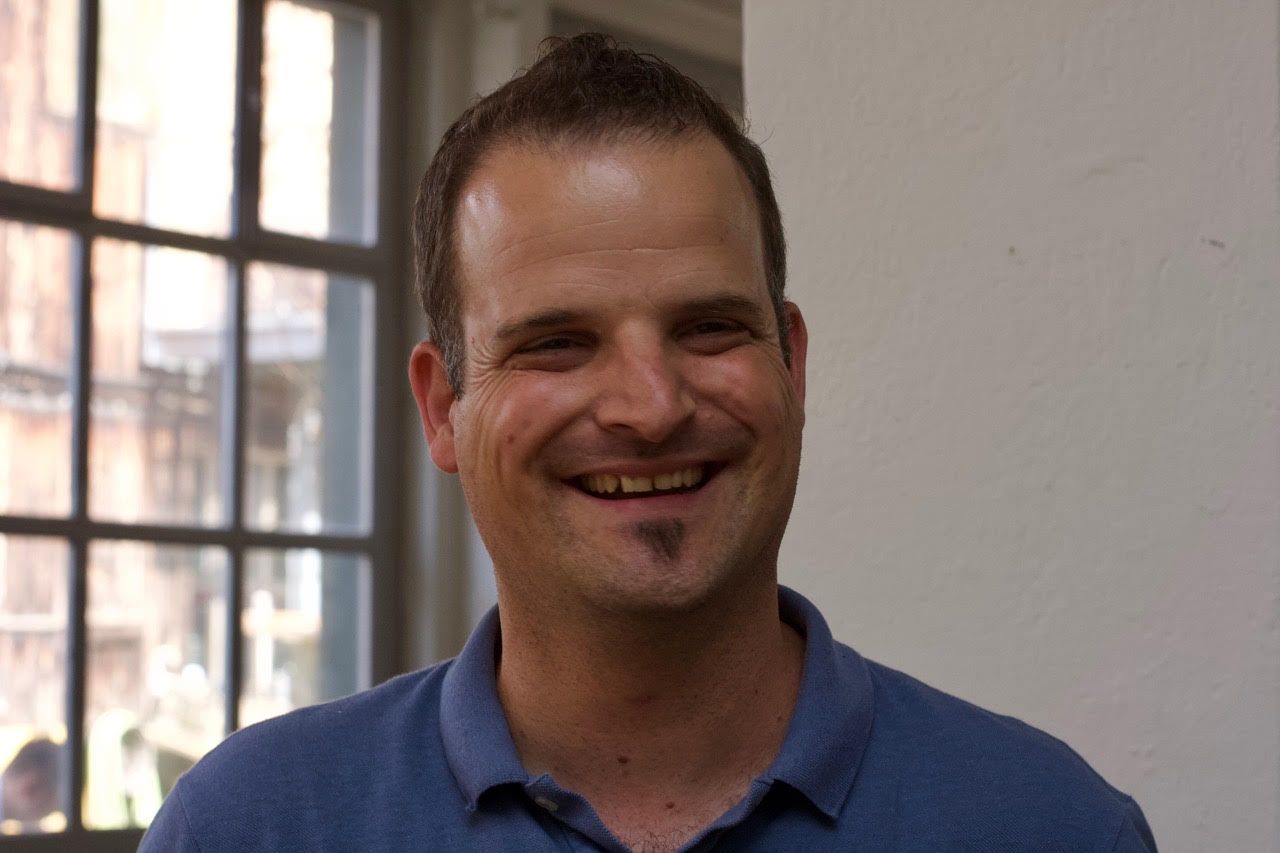
Learn more about Lean-Agile Procurement
Lean-agile procurement is an agile approach for complex procurements, where collaboration between people is a key success factor. An example might be an. international sourcing, where considering other cultures usually becomes very important. It's totally new and breaks the existing rules in a disruptive way. Visit their website.
Lean-Agile Procurement Goals:
- Reduce wasteful preparation efforts as much as possible.
- Time to market in days instead of months to deliver business outcome earlier.
- No custom proposals, just ONE page so creation and comparison is as easy as possible.
- Focus on evaluation of the hard and soft skills of your partners.
- No added translation step with legal, the lean procurement canvas is an agile contract.
Witness a Big Room Sourcing Event
The CKW Group achieved a new "world" record in 2018 by selecting a product and a partner within 2 days. See 4-minute video below.
Relearning from Henriette's Leadership Story…
What a beautiful story of organizational and personal change. It is inspiring to see how moving from process controls to cross-functional collaboration can impact so many aspects of business performance and employee morale.
First - change is possible. Regardless of your systemic and likely stagnated practices, new thinking and new actions are available to you. With a bit of creativity, there is no limit to potential disruption of your business.
Second - Complex problems require cross-functional collaboration. Focusing only on a single function like procurement limits potential business impact. Seek solutions that cross traditional organizational departments.
Third - It’s not a sign of weakness to ask for help. I used to think I had to have all of the answers as a leader. Yet the leaders who inspire me most are the ones, like Henriette, who had the courage to not know, and ask for help. Call a friend. Attend a class. Read a book. Hire a specialist. Don’t be afraid to try something new and seek help in doing so.
Episode Transcript
Pete Behrens:
What does if feel like to shatter a systemic business bottleneck?
Welcome to another episode of Relearning Leadership, where we explore a specific leadership challenge and break it down to help improve your leadership, your organization…and even your personal life.
Today, we meet Henriette Kamfer, a Procurement Specialist with Australia’s largest natural gas infrastructure business, the APA Group. Henriette is mired in, and tired of, business-as-usual financial practices for sourcing new projects.
Henriette Kamfer:
If you have an hourglass, that little space in the middle where the sand goes through, that's where we are. This information just slowly trickles through between the parties.
Pete Behrens:
Henriette shares her courageous story of radically transforming their procurement process, and in fact the entire sourcing and delivery process, of a high-profile program.
Now, she couldn’t have done this without the help of Mirko Kleiner, the agent of change in our story, and the founder of Lean-Agile Procurement.
Together with Mirko, we explore Henriette’s story and what we can learn from it.
I’m your host, Pete Behrens, founder of Agile Leadership Journey and 30-year veteran in corporate leadership—both as a leader myself and in guiding other leaders. Thank you for joining us today. Let’s dive in with Henriette and Mirko.
So let me set the stage for our listeners. I'm in Boulder, Colorado, and it's 2pm on a Wednesday. Mirko is in Zurich, Switzerland, and it's 10pm, and the kids are in bed, hopefully! And Henriette's near Adelaide, Australia, and it's 6:30am the next day, Thursday. So needless to say, this episode is, together, truly a global experience, so I want to just thank you both for your flexibility in being here today.
Henriette Kamfer:
Really excited to be here, Pete. Especially joining Mirko as well.
Mirko Kleiner:
Yeah, thanks for having us. It's just a global experience all around the world. Looking forward to our session.
Pete Behrens:
Why don't we start with you, Henriette? As a Procurement Specialist, could you describe what you do?
Henriette Kamfer:
Yeah, Pete. I work for the APA Group, which is one of the largest gas distribution networks in Australia, and we supply gas to about 1.5 million customers across Australia.
I form part of the very important team in a business that makes the smart decisions on how best to spend the company's money, specifically looking at our relationships with suppliers and making sure that we follow the right processes and procedures to actually buy the right things that our customers or stakeholders need.
Pete Behrens:
Okay, so we're talking a big system, lots of vendors, lots of moving parts in this business.
Henriette Kamfer:
That's right.
Pete Behrens:
So Mirko, What's your role in this story?
Mirko Kleiner:
I'm an Agilist, as you, Pete. And years back I got in touch with procurement, and it turned out that nobody took care of this function and this profession from an Agile perspective. As an ex-software supplier—most of you in the audience maybe have been in the similar role—it was always very challenging, especially going through the multi-million dollar bits. In other words, it was a pain in the ass, right? I got in touch with procurement professionals like Henriette. We were looking for new ways of working, and we want to make this a better place for the business, for the employees, and even the vendors. I'm kind of the inspiration for Henriette's case, if I may say that, if that's not too arrogant! [Laughs]
Pete Behrens:
Alright, so it sounds like we've got a leader who maybe has a challenge we'll be exploring here in just a second. We've got a catalyst with a vision of something different. And then there's me, who—I think I try to stay away from finance as much as possible. This is not my specialty, but I'll see what I can do to navigate this journey with us. So why don't we start with the challenge? Henriette, what are the challenges you face in procurement, or in finance here, that are changing or causing your world to be a bit disrupted?
Henriette Kamfer:
I think the biggest challenge that we have is for us to demonstrate real value to the business, especially in a fast-changing environment. In our case with digital metering, the electricity smart metering scenario has changed a lot. And gas has really just been idling along, not providing digital metering to our customers and a better experience for our customers in a very digital world, where everybody is using cell phones and multimedia, etc.. For procurement, the challenge is to stay relevant and help our business partners to move the company forward.
And couple to that, the perception seems to be that our processes are slow and we only focus on cost. We also want to tender everything, and that's not really considering business needs. We've got this vision of changing and leading our organizations to something better, but then we have to find the time of these busy decision makers to help us with it. And that's mainly because the buying team doesn't have the authority to make decisions. It's always this bureaucracy, where you have to go a bit, a level higher to make a decision.
It also takes time for us to develop specifications, and then negotiating these extensive contracts with all the rules around it. There's excessive time that's being wasted back and forth awaiting responses with suppliers. So our relationships with suppliers are not fluent and not supporting us, really, in achieving that relevance that we want. It’s really like procurement sometimes just becomes that bottleneck. If you have an hourglass, that little space in the middle where the sand goes through, that's where we are. This information just slowly trickles through between the parties.
Pete Behrens:
Well, I think what you're describing there is probably why I get frustrated when the procurement gets involved in our contracts. But what you're describing here, though, is the business itself is changing.
Henriette Kamfer:
Yes, when I completed my LAP training with Mirko, that's when I realized, actually after 20 years of being a Procurement Professional, that there's definitely an opportunity to become relevant by using Lean Agile procurement. So absolutely agree that Mirko has been a great inspiration for me. And he's created a mind shift inside of me that we could do things better. We could really engage and become the glue between our suppliers and what they can deliver, the innovation that they can bring, together with our internal stakeholders, create a very fast and responsive team that can react to the changing environment.
Pete Behrens:
That’s excellent. So maybe this is a great place, Mirko, for you to provide some general context. So, is what Henriette’s describing common? Connect us to the general problem.
Mirko Kleiner:
Yeah, definitely. I think procurement is one of the functions that—yeah, it was designed from the beginning as a support function, depending on the business. It's a strategic function. I mean, sometimes they're responsible for up to eighty percent of the business’s revenues, right? So it's really an important profession. Nevertheless, it was always designed to be just efficient and process-driven, so from an Agile point of view, they really took contract negotiation over customer collaboration, at its extreme. So what we are currently seeing, not just with Henriette and her gas industry, just in general in procurement, is the need for speed. So that they could catch up with the business, with the vendors’ innovation.
Second is that the market conditions have changed. Besides having everything now, and not in six months, or sometimes even later, it's also the increased complexity. Procurement Professionals are currently in this mode that they need to describe it. To be fair, this transactional nature is already 120 years old, and the business often misuses procurement to specify what they really want. And the majority of the people don't know how to deal with that, because their current tools do not fit anymore. And it turned out that Agile could bring here a lot of value and a lot of good practices.
It's also a chance to change the set of values. There is a movement in procurement around sustainability, for example, which goes together very nicely with the Agile values. So we also take this chance to change the culture that we are looking for partners instead of just suppliers. So big, big change is ongoing currently in this profession, and it's a big opportunity as well, in my opinion.
Pete Behrens:
Yeah I think that's great context. So, I'm hearing from Henriette, we've got this challenge, a little slow. I like that visualization of the sand glass. And Mirko, what you're describing is the vision of moving from a gatekeeper to a partner and moving from negotiation to collaboration. We've used a couple of techie terms here, and maybe if I could translate. We're talking about Lean Agile Procurement, or LAP. To me, this sounds like collaborative contracting. If I'm going to take it out of techy speak, is that a fair translation?
Mirko Kleiner:
Yeah, definitely. So you don't need to know the details of our approach. If I simplify it, what we are doing is we are bringing the right people together, no matter internally or with the externals. And Henriette, maybe you could guide us a bit through your example, where you have put together multiple vendors— competitors, to say in the same room to do the negotiations. Not just the negotiations, but also solution design, and their proposals in a more collaborative way and with huge success.
Henriette Kamfer:
That's right. So with this challenge that we have to move our current existing mechanical meters to a digital space—we found this to be very complex. We know it's going to take a long time. We need to make sure that we get the best out of our current meter fleet as well. And the Australian market has some competitive nature in it as well, so we could utilize that. And we actually approached the market and told them to come tell us why we should invite you to our Big Room, which was the first step in even changing our suppliers. Because for the first time they had to present why they think they should be invited. They had a half-an-hour to present to us the key benefits and why would we want to even speak to them, which was a different approach to what I've ever used before. And we could immediately see the culture fit between us
and the top five suppliers that we selected out of this shortlisting process.
What was really new for me as well is that we applied an Agile concept, which was fast feedback. So we gave immediate feedback after the session to suppliers. And this is revolutionary, because in the procurement space, you would just sit on feedback for weeks, and suppliers are totally—they don't know what's happening and what decisions you've made.
Pete Behrens:
I'm in one of those rounds right now. [Laughs] It's been weeks, and I'm like, “Wait a second, I submitted an RFP (Request For Proposal) like a month ago! What's going on?” [Laughs]
Henriette Kamfer:
Exactly. I've got emails that came through from suppliers saying, “This is excellent! Thank you so much for that immediate feedback.” So they really appreciated that feedback. Even the suppliers that were not shortlisted came back and said, “Thank you. We recognize where our shortcomings were, and we agree.”
The leadership challenge there was for our team to change in that feedback loop, because we were used to first debating and going back and thinking and talking and talking and talking about what will we tell suppliers. And now all of the sudden, that culture shift of being very honest and open and transparent had to change.
Pete Behrens:
What you're describing is even before an official RFP process, official bid process. You're essentially inviting them in to say “Hey, pitch! Why should we even work with you?” And so there's a feedback loop that's happening almost in a premise level. Mirko, maybe help us understand; connect us to the theory behind this.
Mirko Kleiner:
Sure. Instead of having the business hand over a case to be sourced to procurement, and procurement does the tendering, they get some proposals back, they sort it out, give it back to the business—which one you like the best—and then they go into final negotiations, and then they're still not done. Then the lawyers need to show up and do the legal stuff, right?
We wanted to come around that transactional nature and replace it with a more collaborative approach. She spoke about the team, so she became part, as a Procurement Professional, of a cross-functional team, led by the business, which took ownership, not just about the sourcing, but also about delivery. This team was operating in an Agile way, if you're familiar with Scrum. And as a first step, after they prepared, they do the sourcing. Depending on your case, and there is not a silver bullet—maybe you already know the solution, maybe you don't, as in Henriette's case. And then you need to do market research, come up with a long list, shrink it down to a shortlist, and so forth.
And this used to be a task for procurement. But we are doing it together as a team. We add all the diversity and different capabilities and points of views, opinions, to that. And, do we always ask them to come up with a proposal? No! It was the team's decision, of Henriette's team, to come up with this this way.
We had a case over here with Swiss banks. They said, “We are sick of this! Hundreds of RFIs (Requests for Informations).” If you don't know who is out there and would be capable, you do an RFI. And we said, “Okay, instead of reading hundreds of pages, we let them come up with a one minute video.” That was our solution. So slightly different, but the same. You go through the usual procurement steps, so we still are compliant. That's the cool thing about it. But we apply it as a team.
So the magic sauce, as I call it, is then the final step, where we do not ask the vendors for a proposal, not a document or something. So we invite them—and Henriette had mentioned it already—in a Big Room Workshop, could be virtual or in person, and we invite them all at once. And we want to let them co-create the solution based on our targets, vision, objectives and so forth. We just do everything in a collaborative way so that the team could make a decision right away. That's our main aim.
Pete Behrens:
So Henriette, I'm getting a sense then—this is not a procurement problem. I mean, you're talking legal, compliance, risk, you're talking a number of business functions involved. Is that true in your case, where you're collaborating and working together as a larger group?
Henriette Kamfer:
That's absolutely right. Our cross-functional team consisted of subject matter experts from across the business. And I think something that we definitely changed in our team from how it was done in the past is that we focused on this culture-first, where we actually started out by saying, “What is our team agreement between us? How are we going to work together? How will we treat each other? When will we meet?” We only met online throughout this whole process, from different geographical locations across Australia. And we agreed on how will we challenge each other and what do we expect from each other during this process. And we established a steering committee, but it was very clear from the start that if we wanted to enforce this change, this team is going to be the driver of it.
So the team organized themselves without really a manager. We had a leader, but the team's skills and abilities came to the fold. And we asked some team members to volunteer for tasks which they felt strong in, and even if it wasn't their usual day job, they would volunteer for it. And that made it really, really strong. And the buy-in from stakeholders is the best that I've really seen in all of my experience, because they felt that they are engaged and they are contributing to something that's really going to be so exciting in the future. It's going to change the gas industry, even beyond our time that we are working in the organization, because it's going to have this lasting effect on our customers, if they could now move from not knowing how to control energy to a place where they can empower themselves.
So the leadership within the team grew tremendously. We were supporting each other, which is also a big change from the past, where it was more adversarial. “You're in engineering; this is your job. I’m in procurement; this is my job”? No, we've got a goal. If this is my strength, play to my strengths. I felt that the culture that we created in the team actually transferred over to the suppliers. They could see the passion that we had, and they responded in the same way, becoming very interested in this project, seeing the energy that we had.
There were some exciting things that the team did, which we had never done before. We created personas, we thought about what customers would look like and what they would want, which I've never done in procurement, and then we defined a user story map. “What would a customer want today, tomorrow, and in the future, as opposed to in the past?” Sourcing events would have been based on, “What did we do in the past? Oh, we have this spend analysis. We spent so much money on this, we spent so much money on that.” Yet, this whole concept was looking towards the future. And that brought this excitement into the team.
What was evident, is that this team now has the mandate to drive this vision forward, because we were just informing the steering committee of what we were seeing and achieving. And that made it Agile as well, as opposed to what I mentioned in the beginning, going back and getting approvals first, etc.. The whole shortlisting was done within the team. The team decided who was going to go forward, without it going to a next level for approval, etc.
Pete Behrens:
You're describing something I think a lot of our Agile listeners will understand immediately. Taking disparate functions together, cross-functionally working together as a team. But what's different here is the types of business functions we're dealing with. Finance, legal, and operations as well as engineering and design, human factors. And it sounds like you propel that to the supplier itself in the way you select the supplier, in the way you engage the supplier and then run the contract. That, to me, is the beauty here. That's where a lot of companies, I think, are missing the agility as a business.
You're describing a lot of internal health and empowerment and improvement in life in a lot of these workers. But I can imagine your finance friends are saying, “Show me the money! How is this helping us financially?” or “How is this helping us on the bottom line?” How do you respond to that? Have you been able to demonstrate the financial promise of this type of engagement?
Henriette Kamfer:
It was interesting, because we had this future vision, we actually transferred that onto the suppliers. In the past, they would have just given us a list of items and pricing, etc., but now they are thinking about this bigger picture, this future vision, and they actually developed a much more robust roadmap of their own technology and their own products for the future, which actually had a positive outcome for us for today. And we managed to achieve some savings for our contract for the today.
We also achieved them sharing the cost of field trials for our digital metering, which came out of this competitive nature and the Big Rooms, which was really good. That's the first step for us. For me my vision is just to see that first smart meter installed. So that's going to be a big, big achievement for us, and that suppliers are actually contributing to it because they also want to see that becoming a reality for us, which is good.
Mirko Kleiner:
I would love to add maybe a bit more context. We recently sourced an ERP system— like you might have heard of SAP or Microsoft or whatever. Super complex because a lot of company processes are depending on that. And we just did that in four weeks. So from the idea, “We need a new system,” until the contract was signed with a vendor and the team was set up and ready to start delivery—it was four weeks lead time. To give you some context, benchmark is twelve months to do something similar.
In terms of numbers, I want to come back to this shift that Henriette mentioned, from costs to value. You still could buy the most expensive system or service or gas meter or whatever. So cost is still relevant, but time to market becomes much more important.
Just imagine if all the Aussies out there could start measuring and improving their energy consumption themselves, this will create a huge impact on the energy consumption in all Australia, or at least where Henriette’s company is delivering gas to. It’s totally different relation to the numbers that we get, right?
And if we could share that vision, as she mentioned, with the vendors, the nature of this cross-functional negotiation based on Agile values, which is much more honest and based on trust, which sounds very weird, but we are trying to create this safe space where we have very honest conversations with the vendors. “So let's talk about your biggest concern that we haven't talked about yet. What are cost drivers? This one requirement makes it complex, so let's talk about that,” etc.
It's very hard to quantify that, but on average, I would say we could have savings, and in a matter of a better investment, up to 80% by sourcing the right things. And another, maybe less commercial KPI, but what I'm really proud of is that we got a recommendation rate by all the stakeholders involved of 90%+. So even the vendors that usually lose - some of them don't make it - recommend to do it this way. And I'm pretty sure, Henriette, you had some similar experiences.
Henriette Kamfer:
That's right. The suppliers in the beginning, they were very wary of sharing in front of each other, because of the competition laws, etc.. And it was also a completely foreign concept for them. “We've never done it before, we're the customer, and this is new. It's not how things have been done in the past.”
In the beginning—I remember the first iteration. There were a lot of blurred words and a lot of high-level marketing jargon. But with the immediate feedback that we gave them, they reacted, and one of the new entrants that was eager to get the business actually started sharing a bit more, and then the rest of the businesses followed and took leaps into sharing in front of each other.
So the competitive tension was really high in those sessions. And it was really amazing for us. I thoroughly enjoyed seeing how the supplier teams work together, how they collaborate. Because you wouldn't see that if you just get a paper tender coming in. And now you give them an opportunity of half-an-hour to respond to this challenge that we gave them. And then you just go back, and you see how they collaborate with each other. And you can see this is a well-oiled team. This is going to be how it's going to look like when we award them.
We timeboxed them to give their responses. They literally had three minutes to tell us, are they going to solve their challenge? Which meant that they moved away from all the sales and marketing jargon, and they immediately just told us, “This is your solution.” We got the culture fit there. We could see that they were performing, but we could also see front runners immediately.
It was what the team felt, not just procurement, or not just engineering. It was the culture for our company that came about.
Pete Behrens:
It's an amazing picture you're laying out here about being in the presence of a supplier, being able to see immediate reaction, to be able to see—it's almost like an interview. You know, you're coming in— when you interview for a job, you do those in person usually, or you get a chance to see how they respond. You take a test. Sounds like you're doing all these similar constructs to hiring, which makes sense. It's a procurement process. But I can imagine unraveling 100 years of process is quite challenging.
Henriette Kamfer:
I think we moved mountains, honestly. Our team was really blazing a trail with our Big Room Workshops. I got feedback from suppliers, very good feedback, that they thoroughly enjoyed the process, that each iteration made them stronger and they could hone into what they really wanted to offer and how they could change. So there wasn't that need for that big negotiation, really. We gave them multiple opportunities. So we gave them an opportunity, got their presentation, gave them feedback, they went back, did another iteration. So that's how we were co-creating the proposals with the suppliers.
Pete Behrens:
So Mirko, if people want to understand what this is about, what would you recommend they go take a look at?
Mirko Kleiner:
Out of this crazy idea of, “How can we source something complex in just a day?”, which is now five years old, a whole movement evolved. And you can find out more on lean-agile-procurement.com. We are also offering workshops. Henriette joined some of them, and it was already enough for her to say, “Yeah, it makes sense. Let's give it a try.”
It's fascinating. New topics are raising. “What's this Agile contract thing?” I think that the least thing we want to have is the whole “From idea until contract, is everything Agile?” And deliveries is Agile, but then we have to work under a traditional fixed-price contract with penalties and stuff that doesn't respect Agile values.
What we are also seeing is that pilot cases like Henriette's are a great catalyst for change in an organization. Because procurement is a strategic function. The C level is involved in that. And so they get involved in such a pilot. Yeah, it's a great opportunity to create a success story. No matter if you're doing it Agile or not. If you are setting up a cross-functional team and let the team do the job, just bring the right people together in a collaborative way, you will be successful. Or at least more successful than today.
Pete Behrens:
You're not going to promise complete success? I love it.
Mirko Kleiner:
No, we can’t! [Laughs]
Pete Behrens:
So Henriette, I want to give you the final word here. As a leader, how have you changed, or how has this changed your interaction in the business?
Henriette Kamfer:
Like I said, even the training already shifted my mindset, which was about a year ago, when I knew that we could do procurement better. We could really make that impact. So that happened inside of me already, and I was just so grateful that I had an opportunity to actually practice it and see it become alive. Because it's good to see the training, but only once you're walking through it and you're in it—that's when you can change.
I think the biggest change for me was that I've shifted towards seeing the strengths in my team members and building on top of their strengths so that we could work together to achieve more. We become a very, very powerful team. We become the asset to the organization, really. I think that's one of the things that Mirko also says a lot of the time, is that the team becomes the asset over the process or the procedure, and we deliver the results as a team together.
Pete Behrens:
Well Henriette, I want to say thank you for your courage to take something that's a class and the courage to bring that into a rather large system. And to create the change you've created, I imagine that took a lot of courage. And I also want to say thank you for your courage to share your story with us today.
Henriette Kamfer:
Thank you for the opportunity, Pete. I'm really excited, and I think that there's definitely a story to tell. That's why it's easy to say.
Pete Behrens:
Yeah, thank you. And Mirko, I just want to say thank you for introducing Henriette to us and for sharing such a powerful example of how businesses are being re-thought and how leaders are rethinking their role in our processes at work.
Mirko Kleiner:
Yeah, thanks so much for having me. For Agilists that maybe are listening, we kind of try to take business agility to the next level. Because Agile doesn't stop at the company's front door. So we need to start to include the vendors, the partners, and even competitors. Recently the CPO (Chief Procurement Officer) told me that today, they are my vendors, tomorrow they are my customers. So what's the difference? So it's more of overcoming this old concept of a supply chain and starting to think in networks of not just teams or individuals, cross-functional on a low level, but on a high level. Cross-functional in a sense of companies and businesses to create something better. Then it's also much more easy to start creating an impact together in terms of sustainability, green economy, whatever matters the most to us.
So thanks for having me.
Pete Behrens:
Thank you.
What a beautiful story of organizational and personal change. It is inspiring to see how moving from process controls to cross-functional collaboration can impact so many aspects of business performance and employee morale.
Let me share what I took from this story. First, change is possible. Regardless of your systemic and likely stagnated practices, new thinking and new actions are available to you. With a bit of creativity, there is no limit to potential disruption of your business. Second, complex problems require cross-functional collaboration. Focusing only on a single function like procurement limits potential business impact. Seek solutions that cross traditional organizational departments. And third, it’s not a sign of weakness to ask for help. I used to think I had to have all of the answers as a leader. Yet, the leaders who inspire me the most are the ones like Henriette, who had the courage to not know and ask for help. It’s okay to call a friend. Attend a class. Read a book. Hire a specialist. Don’t be afraid to try something new and seek help in doing so.
And for those interested to learn more about the specific approach, search “Lean-Agile Procurement” or visit our website, where we share their links. We also provide specific information about their Big Room Event Henriette described here.
Thank you for listening.
Relearning Leadership is the official podcast of the Agile Leadership Journey. It’s hosted by me, Pete Behrens, with analysis from our global Guide community. It’s produced by Ryan Dugan. With music by Joy Zimmerman. If you loved listening to this podcast, please leave us a review. And visit our website, relearningleadership.show, for guest profiles, episode references, transcripts and comments, and more. And to (re)learn more about your own leadership, visit us at agileleadershipjourney.com.
Explore:
Recent Episodes

